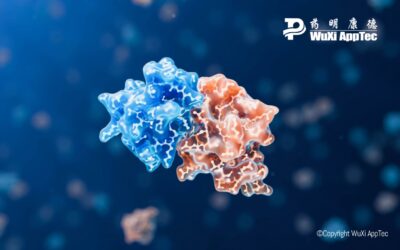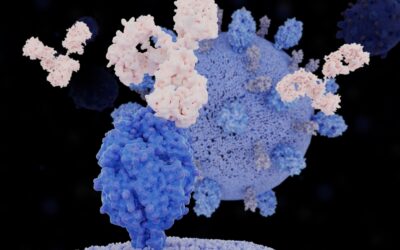Drug solubility refers to the ability of a drug compound to dissolve in a solvent or medium, which impacts the overall efficacy of a drug compound. In this blog post, we discuss why testing drug solubility is important across the drug discovery and development continuum.
The way a drug compound dissolves in a solvent or medium influences various pharmacokinetic (PK) properties, including absorption, distribution, metabolism, and excretion (ADME).
Read More: A Short Guide to In Vitro ADME and In Vivo ADME
Without solubility, a drug can’t be absorbed, leading to low bioavailability. Knowing the solubility of a drug compound helps drug developers understand the optimal concentration of a drug in circulation for the desired pharmacological response. To do this, they need to conduct drug solubility testing.
What Is Drug Solubility Testing?
Drug solubility is typically expressed as the amount of a drug that can dissolve in a specific amount of solvent or medium at a given temperature.
There are two main types of drug solubility testing: kinetic and thermodynamic solubility testing.
Kinetic solubility testing evaluates the solubility of a compound that is already fully dissolved in an organic solvent (typically dimethyl sulfoxide, or DMSO). A small percentage of this organic solvent is introduced into an aqueous solution, and the precipitation of the compound is measured across various concentrations.
Thermodynamic solubility testing measures the maximum concentration of a drug compound that can be dissolved in an aqueous buffer system or bio-relevant medium under equilibrium conditions.
Here’s when to use each and why during drug discovery and development.
Drug Solubility Testing: 4 Ways It Helps Drug Discovery & Development
The determination of solubility values should be prioritized in drug discovery. Here are four ways drug solubility testing helps accelerate the drug discovery process and beyond.
#1. Lead Identification
Solubility testing is used during early discovery stages to help drug developers identify promising drug candidates.
Related Reading: 3 Ways Early ADME Screening Boosts IND Submission Success
If a drug exhibits poor kinetic solubility, it may pose challenges in formulation and delivery, affecting its overall success as a pharmaceutical product. Compounds are more likely to fail if they have inadequate absorption or low bioavailability. Performing solubility screens early on helps to quickly identify and remove these compounds, saving the cost of more expensive screens later on and improving the chances of identifying promising drug candidates.
#2. Lead Optimization
Once researchers identify promising drug candidates, they enter the lead optimization stage. This is where they aim to refine and improve the drug’s properties.
Kinetic solubility testing can help with this, too. If a lead compound exhibits poor kinetic solubility, it may face difficulties in formulating into a dosage form with acceptable bioavailability. Identifying these challenges early allows researchers to explore alternative strategies or modifications to improve solubility. Structural modifications to the lead compound can be explored to improve solubility while maintaining or enhancing other desirable pharmacological properties.
#3. Drug Formulation Optimization
Drug formulation optimization is the step where researchers improve drug formulations to enhance their effectiveness, stability, and patient acceptance. The goal of this phase is to achieve the desired drug delivery profile, bioavailability, and therapeutic outcomes while ensuring the formulation’s safety and stability over time. Optimization often involves adjusting factors such as drug concentration, excipients, and formulation methods.
At this stage, thermodynamic solubility testing helps researchers:
- Choose optimal solvents based on the highest achievable solubility, ensuring that the drug can be formulated at the desired concentration.
- Prevent issues such as crystal formation or precipitation, which can impact the efficacy and safety of the drug.
- Develop efficient and reproducible drug formulation processes.
#4. In Vivo Behavior Predictions
PK profiles of test subjects after administering a drug in vivo can better reflect relevant characteristics of compounds. For compounds in early drug development, predicting this behavior as opposed to conducting full in vivo tests helps developers save time and money.
Understanding how a drug behaves in different solvents and under specific temperature and pressure conditions via thermodynamic solubility testing, researchers can make informed predictions about the drug’s performance within the human body, setting the compound up for success in later stages of development.
Conclusion
Drug solubility testing offers valuable insights during different stages of drug discovery and development. Kinetic solubility testing assesses the rate of dissolution over time. This is typically conducted during the early stages of drug discovery, including lead identification and lead optimization, to guide the selection of promising drug candidates. Thermodynamic solubility testing provides information about the maximum amount of a substance that can dissolve in a solvent at equilibrium and is typically conducted during the later stages of drug development to optimize drug formulations and predict in vivo behavior.
WuXi AppTec is an experienced preclinical testing partner, conducting more than 300,000 in vitro studies every year. With extensive experience conducting drug solubility studies, we can help you develop an in vitro ADME program for your specific drug candidate.
As a global company with operations across Asia, Europe, and North America, WuXi AppTec provides a broad portfolio of R&D and manufacturing services that enable the global pharmaceutical and life sciences industry to advance discoveries and deliver groundbreaking treatments to patients. Through its unique business models, WuXi AppTec’s integrated, end-to-end services include chemistry drug CRDMO (Contract Research, Development and Manufacturing Organization), biology discovery, preclinical testing and clinical research services, helping customers improve the productivity of advancing healthcare products through cost-effective and efficient solutions. WuXi AppTec received an AA ESG rating from MSCI for the fourth consecutive year in 2024 and its open-access platform is enabling around 6,000 customers from over 30 countries to improve the health of those in need – and to realize the vision that “every drug can be made and every disease can be treated.”


